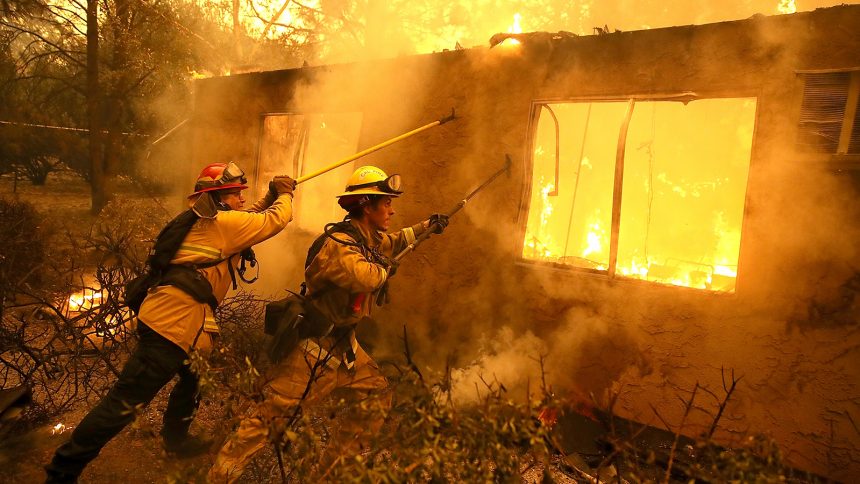This story is part of State of Emergency, a Grist series exploring how climate disasters are impacting voting and politics. It is published with support from the CO2 Foundation.
During the presidential debate earlier this month, Vice President Kamala Harris was asked about her plan to fight climate change. Her response didn’t focus on the dangers of drought or rising sea levels, or unveil an ambitious plan to rein in fossil fuel emissions. Instead, her answer focused on home insurance. “It is very real,” Harris said. “You ask anyone who lives in a state who has experienced these extreme weather occurrences who now is either being denied home insurance or it’s being jacked up.”
Just a few years ago, Harris’ insurance comments may have been considered wonky or boring to voters. But since 2020, the increasing number and severity of natural disasters like wildfires and hurricanes have cast home insurance markets into turmoil, leading to an explosive rise in premiums.
Unaffordable premiums now represent one of the most tangible ways that climate change is affecting everyday Americans. And this election season, insurance commissioners — the state officials in charge of overseeing these markets — are suddenly in the hot seat.
These officials have historically operated outside of the spotlight, steeped in financial statements and wonky regulations. In the 11 states that elect their commissioners — the rest appoint them — these races have rarely received much interest. In some elections, incumbents don’t even face a challenger. In others, state data shows that as many as 17 percent of voters simply skip over that section of their ballots.
“It’s just not something [voters] pay attention to until things go wrong,” said Dave Jones, who served as California’s insurance commissioner from 2011 to 2019. “Right now, things are going wrong.”
In recent years, insurance companies have found themselves increasingly on the hook for homes hit by wildfires and severe storms. In Louisiana, a parade of back-to-back hurricanes and extreme storms in 2020 and 2021 caused insurers to pay out well over twice as much money as they brought in. Similarly, in Colorado, where the state has experienced over 40 billion-dollar disasters in the past decade, insurers lost money in eight of the past 11 years.
To pay for all this damage, premiums have been skyrocketing nationwide. According to a 2024 study of insurance rates, the average home premium rose 33 percent between 2020 and 2023. In disaster-prone areas like Florida, the Gulf Coast, and California, rates have increased even more, with some insurers pulling out of markets entirely.
“The insurance crisis that people and businesses are experiencing — not just in California, but across the United States — is the price that we’re paying for failure to more aggressively transition from a fossil fuel-based economy,” Jones said.
These rising costs are prompting voters to take a closer look at elected commissioners that regulate the industry in their home states — and it is forcing candidates to more thoroughly consider insurance shifts and climate change in their platforms.
States have been regulating their insurance markets for more… (text truncated)






